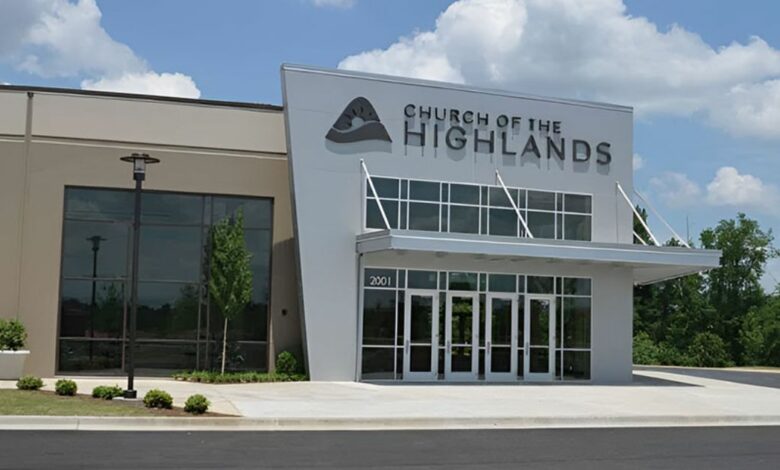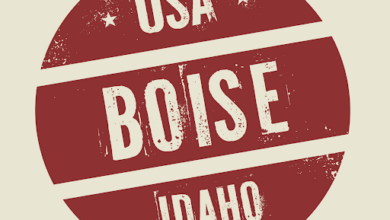Church Of The Highlands Exposed – The Complete (Scandal) Story

In recent years, the call for transparency and accountability in religious institutions has grown louder. The Church of the Highlands, in 2024, finds itself squarely in the crosshairs of this debate. The phrase “Church of the Highlands Exposed” isn’t just a headline anymore; it’s a beacon of the escalating scrutiny faith-based organizations are facing.
This article dives into the complex allegations surrounding the Church of the Highlands exposed, offering a balanced and detailed exploration. It’s not just about the claims and the church’s responses, but also the broader impact on the community and faith as a whole.
As we further delve into the allegations, we’ll also shed light on their wider implications on faith and the expectations of modern society from religious institutions. Stay with us as we navigate through this multifaceted and crucial topic.
The History of Church of the Highlands
Tracing the roots of the institution lends significant context to the current situation. Over the years, it’s grown from a tiny congregation to a significant spiritual refuge. Understanding its evolution helps fully comprehend and weigh the present circumstances.
Founding and Growth
The Church of the Highlands was conceived in 2001 in the living room of Pastor Chris Hodges. The humble beginnings of a small group gathering has since expanded into one of the largest churches in the United States with over 20 campuses across Alabama and extending beyond its borders. Its exponential growth has been attributed to an inclusive ethos that welcomes individuals from all walks of life. The Church of the Highlands’ mission focuses on disseminating the life-giving message of Jesus in an effort to nurture completely devoted followers of Christ.
Leadership Structure
The Church of the Highlands operates on a hierarchical leadership blueprint. As the founding pastor, Chris Hodges sits at the pinnacle of this hierarchy, holding the position of senior pastor. He’s accompanied by a dynamic leadership team that holds the reins of the day-to-day operations and various ministries of the church.
The governance and leadership structure form a significant aspect of the Church of the Highlands’ public image and influences its functionality. Understanding this structure provides crucial insights into the recent controversies that plague the institution, including allegations of authoritarian practices and alleged ethical misconduct amongst its leaders. The interplay between the congregation and the leadership, coupled with the decision-making process within, holds essential keys to deciphering the church’s current state.
It’s important to note, the leadership structure and the ethos that drives it, play a pivotal role in the formation of an institution’s culture, values, and practices, and their understanding forms an integral part of analyzing the ongoing issues.
What Are The Allegations – Church of the Highlands Exposed
As one delves deeper into the history and realities of the exposed Church of the Highlands, certain issues come to the forefront. Various allegations against the church have been made public, bringing into question its ethical practices and core values. These allegations fall broadly into two main categories: financial misconduct and controversial practices.
Financial Misconduct
Allegations of financial irregularities within the Church of the Highlands (Exposed) have raised eyebrows, as some critics have questioned the church’s implementation of funds. A former member who chose to remain anonymous voiced concerns of favoritism, particularly towards those with larger financial contributions. Furthermore, ARC CFO Derek Neece disclosed to The Roys Report that about 24% of ARC’s cash donations, approximately $2.8 million annually, go towards ARC salaries. This raises questions about the transparency of the church’s financial management.
| Data | Value |
|---|---|
| Percentage of donations towards ARC salaries | 24% |
| Annual value of donations toward salaries | $2.8M |
It’s important to note ARC is classified as a church by the IRS and is not obliged to reveal executive salaries or identities of board members. However, this information is typically expected in the interest of financial transparency, a factor that seems lacking here.
Controversial Practices
Critics have noted the strict adherence to certain beliefs and practices within the Church of the Highlands, which they argue leaves little space for independent thought or expression. For instance, an individual reported a case of wrongful termination after flagging an incident of sexual harassment by a church elder, leading to high-profile legal action. This lawsuit also alleges a pattern of misconduct cover-ups and protection of the accused within the church, a scandal that has hit headlines.
The leadership of the church is structured in a hierarchical manner, which has led to accusations of authoritarian practices. For example, allegations of sexual assault against Carter, a staff member at the church, raised concerns about ethical misconduct among its leadership. The controversy compounded when the church allowed Carter to preach despite these allegations, a decision that Pastor Hodges has publicly regretted.
While investigations into these allegations are ongoing, their emergence has sparked a discourse about accountability, particularly in mega churches like the Church of the Highlands. It underscores the importance of transparency in maintaining the trust and integrity that congregants place in religious institutions. The role of leadership, the power dynamics within the church, and the response to these allegations form integral parts of this conversation.
What Sparked the Allegations?
The exposed Church of the Highlands has been an influential presence in Alabama for many years, recognized for its modern approach to ministry and robust community interactions. Despite its success in fostering community through engaging worship and leveraging technology and social media, the church has also found itself in the center of several controversial allegations.
In the spotlight of these allegations was former pastor Micahn Carter, who faced a legal battle over accusations of sexual assault. These charges originated from an incident reported to have occurred in April 2019. The incident was reported at the Together Church in Yakima, Washington, where Carter was serving as the lead pastor.
A similar situation arose with Dino Rizzo, former senior pastor of the Healing Place Church in Baton Rouge, Louisiana. In August 2013, Rizzo was welcomed into the Church of the Highlands’ pastoral team by Chris Hodges, 14 months after resigning due to an inappropriate affair with a woman who was not his wife.
In reflecting on these allegations, Chris Hodges expressed regret over his decision to allow Carter to take the stage at the Church of the Highlands on July 26, 2020. “I should’ve never let him have a moment on our stage,” Hodges expressed remorse upon learning about the accusations against Carter.
These cases spotlight the key discussions surrounding accountability and transparency within religious institutions. In the midst of its public influence, the Church of the Highlands exposed continues to navigate these conversations amidst the legal and ethical challenges it faces.
Responses from Officials on Church of the Highlands Exposed
The Church of the Highlands has found itself under a magnifying glass, facing growing scrutiny over alleged inappropriate behavior by its leadership. The senior pastor, Chris Hodges, has addressed some of these allegations, expressing regret and outlining future actions. This section will delve deeper into the Church’s responses to these claims, shedding light on how religious institutions are dealing with allegations of misconduct.
Denial of Allegations
In the face of growing criticism, the Church of the Highlands has made efforts to counteract the negative image from the controversies. One such controversy centered on Micahn Carter, a former pastor involved in a sexual assault accusation. Subsequent to these allegations, Carter joined the Church of the Highlands exposed, as part of a ministerial restoration program. This move resulted in further outcry when another former employee from his previous church accused him of sexual assault.
The church’s leader, Chris Hodges, expressed regret that he allowed Carter to preach, stating “I should have never let him have a moment on our stage.”. Hodges was quick to ensure action was taken when he learned of Carter’s accusations, stating “The day we found out is when we made that decision.”. Yet, concerns over favoritism within the church persist, and criticisms pertaining to a lack of transparency and accountability continue to mount.
Plans for Investigation
As a result of these controversies, the church has concrete plans to address the issues raised by their congregation and the public. Hodges was clear in expressing concern and responsibility over the incidents, acknowledging publicly that the church’s response to these situations needs modification.
The need for thorough investigation into these allegations is paramount, not just for the Church of the Highlands, but also in setting precedence for faith-based institutions worldwide. The course of action following these investigations will undoubtedly shape how other religious institutions address ethical violations within their ranks. This is part and parcel of faith organizations acknowledging the importance of transparency and accountability, and committing to uphold these principles.
Thus, it is clear that the Church of the Highlands exposed is grappling with serious issues. The church’s handling of these incidents will determine whether it succumbs to the growing scrutiny, or emerges transparent, accountable, and resilient. It’s a situation that holds significant implications for religious institutions, encapsulating the broader topic of faith in the modern world.
Media and Public Perception

At the crux of public opinion and narrative are the media portrayals, and the Church of the Highlands is no exception. It’s seen its image evolve through media coverage, primarily fueled by recent allegations. From a light of positivity and faith to a beacon of skepticism and controversy, the media apparatus has played a significant part in how the church is perceived in the public sphere.
Members and the wider audience have been able to witness their church’s portrayal with the prevalence of social media. It’s vital to understand that these digital platforms have not only acted as a communication channel for the church, but they’ve also shape-shifted public perspective drastically. The Church has had its moments of triumph and trials in effectively utilizing these social media channels to connect with congregations and a broader public sector.
However, it’s not just the media but the role of transparency that influences perception. According to Derek Neece, ARC’s CFO, approximately 24% of ARC’s cash donations, around $2.8 million annually, is allocated towards ARC salaries. However, upon investigation, The Roys Report elicited no response from Neece in query about the Lead Team’s contribution to this figure. As ARC is classified as a church by the IRS, there stands no obligation for salary exposure or board member identities. Although Neece stated that non-officer board members are not compensated, the lack of response leaves room for question.
These considerations underscore the significance of transparency in shaping a church’s public image. With the power of social media and investigative reporting, churches, including the exposed Church of the Highlands, are under the microscope more than ever before. Observers are interested in not just the good they do but also the integrity with which they operate their financial affairs.
Key Facts
- ARC Annual Salary Allocation: $2.8 Million (24% of cash donations)
- Non-officer Board member Compensation: None (As per Derek Neece’s statement)
- The church of the highlands exposed.
Investigation continues into financial affairs, the fallout of allegations, and other important facets of the Church of the Highlands. Understanding this gives a balanced view of what the Church is experiencing under the present-day lens of media coverage, digital influence, and transparency.
Impact on Members and the Community
The fallout of the allegations raised against the Church of the Highlands have extended beyond the confines of its congregation to the larger community. These have polarized public reaction, affecting the church’s relationship with the congregation and community at large.
Reactions from the Congregation
There’s been a clear division in the church’s congregation following the allegations. Some members have staunchly continued to defend the integrity of the church, believing in the church’s mission despite the criticism. On the other hand, there’s been a significant portion who are calling for transparency and accountability from the church’s leadership. The phrase “Church of the Highlands exposed” became a rallying cry for these disenchanted members, symbolizing their discontent and drawing attention to what they believe are long-standing issues.
Concerns revolve primarily around the church’s financial management. Questions have been raised about the hefty salaries of key executives at the expense of the church’s cash donations, underscoring a sense of mistrust among some congregation members. This dissatisfaction underlines the importance of transparency in the church, not only in its financial affairs but also in how it confronts and handles allegations internally.
Community Outrage
In the larger community, reactions have been similarly split. While many continue to stand by the institution, others have vehemently denounced the church’s actions. The sentiment of outrage is particularly apparent among established black pastors in the area, some of whom have openly condemned the church’s actions – labeling it reminiscent of racial oppressions of the past.
Moreover, the church’s well-intended projects such as the Christ Health Center and the Dream Center come under scrutiny. Although the dedication of these resources to the underprivileged areas has been praiseworthy, community members are reportedly questioning the motives and allocation of these resources in light of the recent allegations.
Lastly, the controversial funneling of the disgraced pastor, Michael Hodges, towards a restoration program has caused significant dismay within the community, raising even more questions about the church’s stance on moral and ethical issues. As investigations and conversations continue, only time can reveal the full extent of the impact of these allegations on both members and the community.
Conclusion
The Church of the Highlands exposed controversy has certainly been a wake-up call for its congregation and the wider community. It’s clear that the allegations have deeply divided members and sparked heated debates. This situation underscores the importance of transparency and accountability within religious institutions. The way the church handles the fallout from these allegations, particularly regarding financial management and the treatment of Michael Hodges, will be a crucial test of its integrity. The ongoing investigations serve as a stark reminder that even the most revered institutions are not immune to scrutiny and must uphold the highest ethical standards. The Church of the Highlands now stands at a crossroads, and its next steps will likely shape its future and potentially redefine its relationship with its congregation and the community at large



